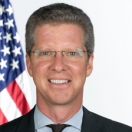
Today the Administration announced its final set of Agency Priority Goals. The 92 goals released embody the Administration’s commitment to delivering results that matter to the American public. Results like disrupting and dismantling criminal organizations at the border; improving health care access for veterans; and increasing high school graduation rates for tribal high school students.
From the outset, this Administration has been committed to making the government smarter, leaner, and more effective. President Obama was the first to appoint a Chief Performance Officer for the Federal Government and has focused his Administration on infusing data-driven, evidence-based management into how the government conducts business.
In my career, I’ve had the opportunity to see firsthand performance management drive real impact. When I served at the Department of Housing and Urban Development (HUD), we used the Agency Priority Goal process to focus on ending veterans’ homelessness, increasing the number families assisted with affordable rental housing and improving the energy efficiency and health of the nation’s housing stock. To help end veterans’ homelessness, we led regular data-driven reviews with the Department of Veterans Affairs Deputy Secretary and our respective teams to see what was working and to remove any roadblocks. This approach helped us make progress on the goal to end veterans’ homelessness – going from aspirations to practical steps that we could implement across the country. Other agencies are seeing similar results. The Department of Justice is recovering more missing children and doing it faster, Treasury has markedly decreased paper-based transactions, Social Security is reducing its backlog of claims, the VA is reducing its claim backlog as well, to mention just a few areas of progress.
Several examples of the newest APGs are:
-
Climate Change – The State Department and USAID will continue combatting global climate change by supporting the transition to high-performing, low-carbon economies. By September 30, 2017, U.S. government partnerships with developing countries to refine and implement their low emission development strategies (LEDS) and domestic and international contributions to global greenhouse gas reductions will result in achievement of 100 (from a baseline of 45) major country or regional milestones, which contribute to significant, measureable progress toward slowing the growth of greenhouse gas emissions. At least 4000 developing country government officials and practitioners (from a baseline of 2000) will strengthen their LEDS capacity through participation in the LEDS Global Partnership, and that capacity will result in 24 strengthened LEDS policies or measures (from a baseline of 0).
-
Disabled Veterans – The Department of Labor will maintain 90% of veteran and service member American Job Center participants receiving intensive services from Disabled Veterans' Outreach Program (DVOP) specialists through September 30, 2017.
-
College Degree Attainment – The Education Department will increase attainment of college degrees by improving affordability, access, and student outcomes, so that by September 30, 2017, 48.4 percent of adults ages 25-34 will have an associate degree or higher.
-
Affordable Rental Housing – HUD remains committed to preserving and expanding the nation's current affordable housing stock. Between October 1, 2015, and September 30, 2017, HUD aims to serve an additional 121,000 households through its rental housing programs. Since fiscal year 2010, HUD has served over 5.5 million households through rental assistance programs.
- Revolutionize Humankind's Understanding of the Cosmos. NASA is scheduled to launch the James Webb Space Telescope (Webb) in October 2018. To enable this launch date, NASA will complete the testing of the Webb Optical Telescope Element plus Integrated Science Instrument Module by September 30, 2017.
I expect the 92 goals we announced today to drive similar progress across the Federal Government on a wide range of core issues. To further ingrain this work into government culture, we also today launched the Leaders Delivery Network. This network consists of a select group of high achieving senior leaders who are each responsible for delivering on one of the Agency Priority Goals. The network will connect its members to each other to share their insights and expertise and will also give them unprecedented access to thought leaders in the performance field.
We have made amazing strides with our previous sets of Agency Priority Goals and we are confident that this set of goals will once again achieve results the American people care about.


